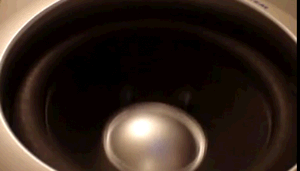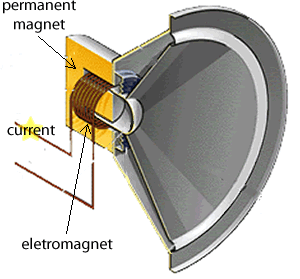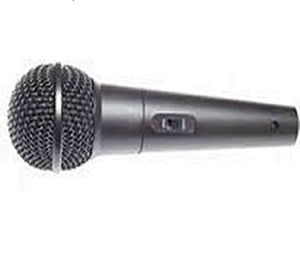
A speaker is composed of a permanent magnet, an electromagnet and a vibrating cone. Electricity flowing through coils of wire create an electromagnet. This electromagnet is attached to the cone. As current flows through the coils of wire the electromagnet that is created is quickly pulled towards the permanent magnet and then quickly repelled from it taking the cone with it.
As the cone vibrates it creates pulses of air that form sound waves.

Speakers produce loud noise when the cone vibrates a great deal, or soft noise when it moves a small amount. Why?
Explain how the amount of current flowing through the wire influences the volume?
What is the relationship between amount of current flowing through the coils of wire and the strength of the electromagnet produced?
What type of current produces a soft noise from the speakers? Explain why.
Microphones are said to work opposite to speakers. When a coil of wire moves through a magnetic field a current is produced. A microphone is made of a diaphragm, permanent magnet and a coil of wire. Knowing this, explain how a microphone works?
A loud sound would produce a current. Explain your answer.
